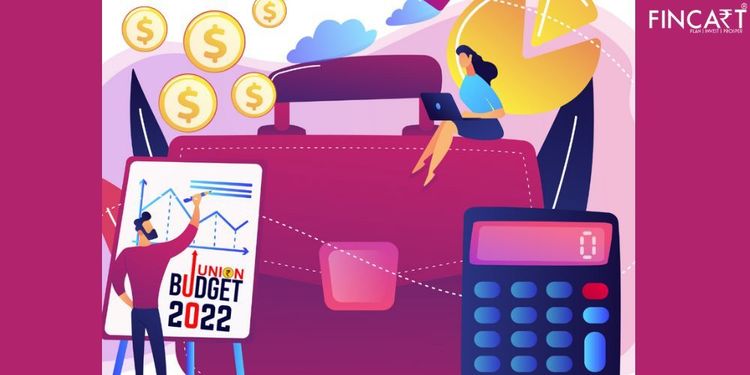Table of Contents
ToggleJust like every year, Union Budget 2022 has dived in this year too!
On 1st February 2022, Nirmala Sitharaman presented her 4th speech on union budget 2022 as Finance Minister of India.
2022 union budget majorly focused on digital and technology. Not only this there were hosts of measures applicable for various sectors like infrastructure, healthcare, provision of e-services, etc. The agenda behind these measures is to boost growth amid high & rising inflation and pandemic uncertainties.
Union Budget laid out remarkable changes concerning personal income tax structures. Amongst that, ‘Digital Rupee’ became the main magnet of the meeting.
Without further ado, let’s dive into the detailed financial sector reading of the measures as disclosed by the finance minister:
1. Direct taxes – income tax

- A stable and predictable tax regime has been vowed to establish a trustworthy tax regime. A one-time window will be provided to correct the omissions in the ITRs filed and has allowed updating past returns too within two years from the end of the relevant assessment year.
- For startups, an extension of the tax incentive period has been given. This means that under Section 80-IAC eligible startups will now get tax benefits until March 31, 2023.
- A reduction of corporate surcharge from 12% to 7% has been advised.
- For co-operative societies, the Alternate Minimum Tax (AMT) will be reduced to 15%.
- Income will be taxed by the government from the transfer of digital assets such as crypto at 30%. Except for the cost of acquisition of digital assets, no further deductions will be permitted. The gifting of digital assets will be too taxed in the hands of the receiver.
- The employer’s contribution towards the NPS (National Pension Scheme) will increase from 10% to 14%
- At 15% the surcharge on long-term capital gains will be capped.
- A tax deduction can be claimed on payment of the annuity or lump sum during the lifetime of a differently-abled parent or guardian only after their attaining the age of 60 years.
2. Indirect taxes – gst & customs

- The last date to make amendments, corrections, upload missed sales invoices or notes, or to claim any missed Input Tax Credit or ITC of one financial year is no longer due to date to file September return of the following year, but it is 30th November of the following year.
- Failure to file an annual return for 3 months beyond the due date of 30th April will be bound to cancellation of their registration, under Section 29 of the CGST Act.
- A revised due date to file GSTR-5 by the Non-resident taxable is now moved from 20th of next month to 13th of next month.
- Sections 42, 43, and 43A of matching, reversal of tax credits have been terminated.
- Since the GST inception, January 2022, recorded the highest gross GST Revenues of Rs.1,40,986 crore
- Concessional customs duty on import of capital goods to be phased out, the initial rate of 7.5% to be imposed.
- Enabling domestic manufacturing will foresee duty concessions on the import of phone chargers, transformers, etc.
- Customs duty on imitation jewelry has been raised to demoralize their imports.
- Reduction on duty on specified leather, packaging boxes will be done to incentivize exports.
- A 5% reduction of customs duty on cut & polished diamond, gems will incur.
- An extension of a year is given on custom duty on steel scrap to help MSMEs.
- Reduction in customs duty on methanol.
3. Budget allocation
- For India, in FY23 a 6.4 % fiscal deficit has been hurled.
- Revised fiscal obligation assessed at 6.9% of GDP.
- To help PM Gati Shakti-related investments, states will receive Rs. 1 lakh crore as a 50-year interest-free loan.
- Around 4.1% of GDP, for the government’s effective capital expenditure, has been estimated at Rs 10.68 lakh crore in 2022-23.
- The expenditure for capital expenditure to be stepped up sharply by 35.4% from Rs 4.54 lakh crore to Rs 7.50 lakh crore in 2022-23.
4. Investment, Sectoral allocation

- An expert committee will be set up to review the regulatory framework for venture capital.
- For the North Eastern Council, PM development initiatives will be executed concerning the northeast. Under this, livelihood activities for both youth and women will be enforced.
5. Virtual currency
- From 2022-to 2023, RBI is keen to introduce the digital rupee using blockchain technology.
6. MSME

- The ease of doing business and living will be launched in the next phase.
- An extension of ECLGS till March-23 has been provided to support the sectors disproportionately impacted by the pandemic. Concerning this, around 95% of ECLGS borrowers are MSMEs. This extension will help the continuation of the handholding of MSMEs and the services sector.
- More than 60% of India’s GDP consists of the services sector is an important paramount engine for not only economic growth but also for job creation, income generation, and livelihood support.
- This extension will entail a boom in lending to the MSME sector.
- The extension of ECLG will provide a boon to lending to the MSME sector..
- To make MSMEs competitive and resilient, these measures have been taken by the government
7. Digital banking
- To reduce delays in payments an online bill system will be launched that will be used by central ministries.
In many years, credit growth has increased at its highest by Rs. 5.4 lakh this year.




